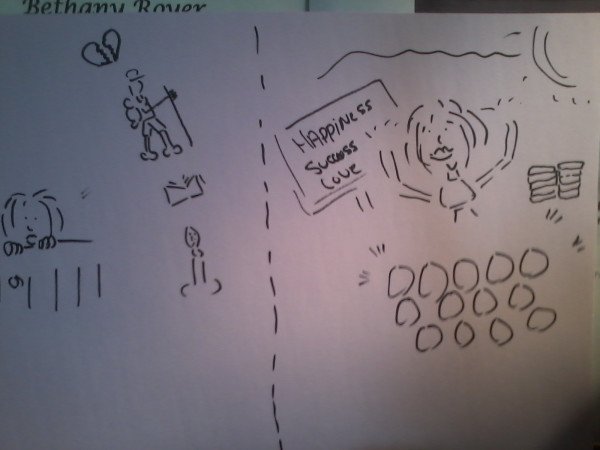First see it, and then believe it
By Bethany J. Royer, B.A. Applied Psychology
“A solitary fantasy can transform a million realities.”
– Maya Angelou
Whether seated in the classroom or attending classes online at Florida Institute of Technology, all of us are participants in lectures.
Being rather fond of lectures, as I tend to be enraptured by speakers, I watch many speakers online, typically through Youtube, for their subject matter and learning value. Some of the latest include talks given by Malcolm Gladwell and George Lakoff, with TED talks being my absolute favorite.
If you are not familiar, TED is all about spreading great ideas and when I say great, I mean fabulous, amazing, inspiring, sometimes tear-provoking ideas that can move the very soul.
That may seem a little overboard, but I dare you to watch the TED talk given by Majora Carter who begs her audience to, “Not waste me,” without wiping a few tears away from the corner of your eye.
The TED talk I write about today was given by Patti Dobrowolski, speaker, illustrator, business consultant and author, who is heavily invested in neuroscience.
As I work towards my psychology degree with Florida Tech, the more interested I become in neuroscience, but that’s another story, another day.
Dobrowolski gave a TED talk titled, Draw your future, where she combines her greatest strengths, drawing and neuroscience, with her incredible articulation on high performance and reaching goals with a dash of humor. Showcasing to her audience in the video I link below how to beat the dismal odds of not reaching a goal (9 to 1) by drawing their future. Where one has to, “First see it, then believe it” as a method of training the brain to make it all happen.
It’s a very interesting premise, though not necessarily all that new. Most of us are aware of star athletes who will picture winning or executing certain maneuvers before a competition or the big game. However, Dobrowolski takes it one step further by showing how to bring the mental picture to the physical world so as to create a road map through illustration.
The first step on creating your own roadmap to success is to draw your current state. Rather than step through Dobrowolski’s “Joe” I’ll present my own which is to first show my current situation where yours truly is looking over a fence. I always seem to be watching others doing what I want to do. Along with the constant thoughts of a broken heart, symbolizing my divorce two years ago, my desire to walk theAppalachian Trail, to write books and a really lousy looking microphone as I want to become an inspiring speaker.
As Dobrowolski points out, you needn’t be a fantastic artist in this exercise, which is a good thing for me as an artist I am not, apparently. And the reason for drawing, states Dobrowolski, is that we remember things better when attached to a picture, 65 percent better.
A current state can be simple or complex, it is up to you, though I did leave mine rather simple. I did not include my schooling because I’m fairly confident of reaching my goals in that area. (So near to my third year I can’t imagine quitting now)
The current state also did not include my children, job, family and friends, etc. I kept mine easy in preparation for what follows next, which is pretty obvious, draw where you want to be. I drew myself cheering amongst an audience, explaining how to be successful in love and happiness with a pile of books to my left. It was simplistic and did not hold quite as many goals as I want to achieve but they held the most immediate.
Come to think of it, I really should have drawn in a math tutor, or perhaps me looking rather scholarly while teaching a math class. Being that I’m not terribly fond of mathematics due to the simple nature of not being very good at it. That’s a story for another day, but for now, I dare you to take the TED challenge provided by Dobrowolski.
http://tedxtalks.ted.com/video/TEDxRainier-Patti-Dobrowolski-D





